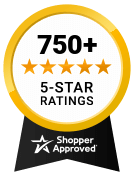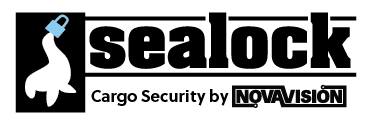Custom Hologram Originations
A custom hologram provides added security. In addition to added security, the hologram improves the shelf appeal and image of your product (and company). Consumer research indicates that products with holograms have higher perceived quality.
A custom hologram origination has the image and graphics embedded in the hologram image. And the graphic elements are rendered in different holographic effects.
The 3 videos found on the previous page reflect some of the comprehensive list of features we offer to you when selecting and designing your custom hologram. All of our holograms are tamper-evident (they show visible signs). To learn more, continue to the below section.
Custom Hologram Options
A) Custom Label Size and Shape
A custom size or shape usually adds about $400 to the total price (this is a one-time expense). But we have over 50 stock sizes and shapes, so it is likely you can avoid the cost of custom tooling. Click HERE to see the listing of stock label sizes.
We can also create custom holograms for applications which may not be on a label (ID credentials, temporary license tags, paper forms, etc.)
B) Silver Metallic, Colored Metallic, or Transparent
We can produce custom images in silver metallic, colored metallic or transparent configurations. Colored and transparent holograms are priced higher.
C) Tamper Evident
All of our standard security labels include a tamper evident feature which will self destruct the label when removed.
For promotional labels, we can produce without the tamper evident feature, which may be priced lower for large projects (greater than 500,000 labels/order)
D) Hidden / Covert Features
The benefit of covert features in the custom origination is that there is no additional production cost. The only cost is the original cost to include them in the custom origination.
D1) Microtext (requires 12x magnifcation)Included at no additional cost on all new originations.
D2) NanotextReadable with up to 75x magnification
D3) Nano Graphic (viewable with 12x)A logo or picture can be reduced and embedded in the image.
D4) Covert laser readable image (readable with a laser pen)Static text or a "wire frame" image can be embedded in the hologram.
D5) Covert animated laser readable image (readable with a laser pen)A "wire frame" image with 3 sequential motions can be embedded in the hologram. When viewed with a laser (in a small sweeping motion) the image will be animated.
D6) Covert floating text/logoHidden text/logo is readable with cell phone flashlight or standard flashlight.
E) Types of Holograms
E1) Standard Dot-Matrix (1000 dpi)Although we can produce a wide variety of hologram types, we recommend dot matrix type holograms. The dot matrix hologram is brighter in all lighting conditions and it has a wider viewing angle, which makes it easier to visually authenticate. Colors and kinetic motion in the hologram are more pronounced with dot matrix.
E2) High Resolution Dot-Matrix (5000 dpi and higher)Higher resolution dot matrix is recommended for images with small graphical elements and nanotext.
E3) 2D/3D HologramsA 2D/3D hologram is a composite of 2-dimensional graphic layers, each set at a different "virtual depth" in the holographic image, Typically, there are 2 or 3 layers, one on the surface, another in the mid-ground and/or background. Each layer is "set into" the hologram at deeper levels. The effect is much like the flat scenery in a theatrical play arranged at different distances from the front of the stage to create the illusion of depth. Another option is to include grid lines, or other conventional 3-dimensional graphic effects to enhance the perception of depth.
2D/3D holograms are not as bright as dot matrix and require stronger, more focused lighting for optimal viewing. The viewing angle for a 2D/3D hologram is also narrower.
E4) Hybrid - 2D/3D and Dot-Matrix combinedCombining 2D/3D and dot-matrix methods into a hybrid hologram can be very effective in combining the broader viewing angle and brightness of the dot-matrix hologram, with the "virtual depth" found in the 2D/3D hologram.
E5) 2 channel (flip)A 2 channel flip utilizes two different hologram images. Each image is programmed to be viewable at a different angle. As the hologram image is tilted, the image will change. . As with 2D/3D holograms, 2 channel holograms require strong and focused lighting for optimal viewing and the viewing angle is narrower than dot matrix
E6) StereogramsA stereogram can create a 3D motion effect of an object or show a small "movie clip" action sequence. The 3D motion is created by using minimum of 6 sequential images which illustrate the motion. These image frames are overlaid on the final hologram. As with 2D/3D holograms, stereograms require strong and focused lighting for optimal viewing and the viewing angle is narrower than dot matrix. Some stereograms may require a higher cost production process which uses UV-casting.
E7). 3D ModelGenerally, 3D model holograms are the most expensive type to create. The process requires a physical model of the intended subject to first be sculpted from plaster or other stable materials at a 1-to -1 size ratio The model-making detail, painting and preparation are a large factor in the cost of this type of hologram. When the models are finished, they are "shot" with a laser on an optics table to create the hologram image.Although this is a more costly and lengthy process, the custom modeling required to produce a 3D hologram adds to the security of the hologram. As with 2D/3D holograms, 3D holograms require strong and focused lighting for optimal viewing and the viewing angle is narrow than dot matrix.
Summary -- If you have a question on hologram design or capabilities, please contact us.
Process to Design & Register a Custom Hologram
Hologram Image Design and Registration
This section describes the typical process to design and register a custom hologram image.
Unfortunately, there is no economical method to prototype a custom hologram origination without going through the expense of making the actual image. Of course, that is why holograms are a deterrent to counterfeiting. This limitation presents some challenges in the design process.
To maximize customer satisfaction and ideally get the desired image on the first attempt, we rely on direct communication with the end user. Purchasing agents, distributors, and sales agents sometimes question the need for direct contact, but it is essential to get the decision-maker's direct input unfiltered.
- The end user provides black and white artwork of the intended image.
- Our designer establishes direct communication with the person who will approve the final design. The customer's personal preferences are often a factor in the design and we need to assure those preferences are not filtered or misinterpreted by a middleman.
- We offer a few other design suggestions and prototypes, along with other completed holograms so the customer can visualize the final product. We will guide and consult the customer as much as possible, but the customer makes the final decision.
- We validate that your proposed design has not already been registered with the IHMA, which provides an international register of images. This assures we do not inadvertently copy a registered image which is in use somewhere else in the world.
- We make the hologram and print a production-grade version to review with the customer.
- After the customer approves the final product, we register your image with the IHMA to assure some other reputable holographic company does not inadvertently copy your image.
- We assign the copyright of the image to the end customer (not all hologram companies do this, especially if you don't ask). Our philosophy is... If the customer is not satisfied with the product or service provided by NovaVision, the customer can take his custom image and go to any other holographic company. Without the assigned copyright, the customer would have to pay to have the custom image created again, should he decide to change holographic vendors.
- We have an excellent track record with the "direct contact" method and registration process outlined above. We also guarantee our work, in that if the design is not up to acceptable standards, we will redo the image at no additional cost.
If you have a question on hologram design or capabilities, please contact us.
Payment Terms
After you approve the custom hologram design, we require payment for the hologram origination and 50% of the labels. For customers with acceptable credit ratings, on repeat orders, we will consider offering extended payment terms for USA-based customers.
Intended Use of Holograms
Our holograms are designed, tested, and intended for anti-counterfeiting, anti-tampering and promotional applications.
Our holographic products do NOT provide any documented health or medical benefits such as improved balance, sleep, pain-relief, weight loss, smoking cessation, etc.
Our holographic products do NOT provide any documented benefits to improve gas mileage, energy efficiency, cell phone reception, etc.
Our holographic products cannot be programmed to resonate at specific frequencies.
In our opinion, claims of medical benefits or improved machine performance are questionable and scientifically unsupported. Consumers should request an independent study (with blind testing) to verify any such claims and benefits.
We are not aware of any independent studies which validate such claims and benefits. Therefore, we will not intentionally produce holograms for these applications.
Warning to Counterfeiters
If NovaVision is requested to produce custom security products or branded packaging, we require proof to substantiate that you are authorized to purchase that product. We independently verify your contact information and legitimacy. If you are not authorized to purchase the product, your contact information may be provided to law enforcement authorities without further notice. NovaVision cooperates with all local, state, federal and international law enforcement agencies to catch and prosecute fraudulent purchases and counterfeiting.
Counterfeiting is illegal and is defined as any attempt to copy an original with the intent to defraud. It is illegal to purchase a fake identification product, an unauthorized custom hologram, an unauthorized duplicate security label, or counterfeit packaging which uses a copyrighted brand name or logo. Further, in the USA, legislation is pending to expand the criminal law so that federal prosecutors will have an easier time prosecuting counterfeiters that manufacture bogus product labels and packaging.
Please contact us to discuss your custom project:
Jeff Gerwin
419.354.1427 ext 4226
jgerwin@novavisioninc.com



